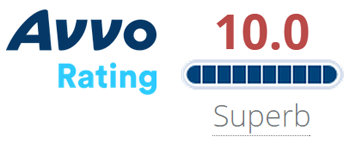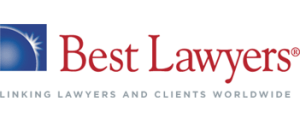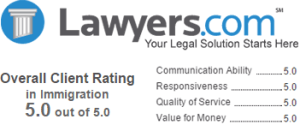(PROVISIONS OF GENERAL APPLICABILITY-
SEPARATE SUMMARY WILL COVER H-1B DEPENDENT PROVISIONS)
NOTE: The regulation is extensive, complex and highly detailed. This summary touches on only some of the issues raised by the regulation-there are many other items that are not covered here. In any event, this summary cannot substitute for the attorney’s own review and analysis of the regulation. It is strictly an attempt to highlight a handful of the changes initiated by the regulation.
· Filing the LCA. A new, 3-page form is included in the regulation. The form can be filed via faxback system using an “800” telephone number, or can be submitted by mail to the Philadelphia DOL Regional Office post office box (no private carriers). Individual regions will no longer process LCAs. If the form is mailed in, it will be scanned into the faxback system. There will be a transitional period, from January 19, 2001 until February 5, 2001, during which the faxback system will not be useable, and LCAs can be submitted only by mailing the new form to the Philadelphia address. However, after January 19, 2001, only the new three-page form published with the regulation will be accepted. The new form removes the actual text of the attestation elements to a new “cover page” which does not need to be submitted to DOL, but must be included in the public access file, be part of any posting of the form (electronic or hard copy) and be provided to the H-1B employee. The form will be available for download (along with a form filler program) from DOL’s website at http://ows.doleta.gov.
· H-1B portability. The regulation indicates that AC21’s H-1B portability provision cannot be used until a petition is filed with INS that is supported by a certified LCA.
· Corporate reorganizations. As long as the conditions specified by the DOL are met, no new LCA will need to be filed to continue employment of existing H-1B employees when there is a corporate reorganization. However, the new entity will be required to maintain a list of the H-1B employees transferred to it, and to maintain in the public access file a list of the affected LCA numbers and their dates of certification, a description of the new entity’s actual wage system, the EIN of the new entity, and a sworn statement from an authorized representative of the new entity expressly assuming the liabilities and obligations of the existing LCAs and containing certain specified language (including, according to the preamble, assumption of liability for any violations by the previous entity under the LCA). According to the regulation, the new entity “shall not” employ any of the predecessor’s H-1B employees unless either this statement is executed and placed in the public access file or new LCAs and petitions are filed. Successors will not be able to use existing LCAs of the predecessor company to file new petitions or extend existing petitions. If the restructuring results in a change in the company’s dependency status, there will be no effect on the employer’s obligations with respect to existing H-1B employees, but any new H-1B hire or extensions of status for existing H-1Bs would be subject to whatever rules would now apply to the company (dependent or non-dependent.)
· Traveling employees. A multi-tiered inquiry is involved in determining what, under the regulations, needs to be done when H-1B employees travel. The first tier involves the question of whether the travel needs to be of concern at all. Essentially, if the employee’s travel does NOT involve going to a new “place of employment” or “worksite,” one need not be concerned with any special traveling employee rules. The regulation includes a new, detailed definition of “place of employment.” It is not a “place of employment” if the “nature and duration” of the employee’s job functions necessitate frequent changes of location with little time at any one place. To meet this criterion, the job (as opposed to the employer’s business) must be peripatetic in nature, the duties must require that most work time be spent at one location but occasional travel for short periods is needed to other locations, AND the travel must be on “a casual, short-term basis, which can be recurring but not excessive (i.e., not exceeding five consecutive workdays for any one visit by a peripatetic worker, or 10 consecutive workdays for any one visit by a worker who spends most work time at one location and travels occasionally to other locations).”
Examples cited that could meet these criteria for not being a new place of employment include computer engineers who troubleshoot at customer sites; physical therapists making home visits “within an area of employment;” or sales representatives making customer calls. Examples of those not meeting these criteria, and therefore going to “places of employment,” include computer engineers who work on projects for weeks or months at a time; physical therapists who “fill in” for other therapists for extended periods or who are placed by contractor companies; or a sales representative who is assigned on a continuing basis to a location away from the home office. It is also not a “place of employment” if the H-1B employee is temporarily at a different location for developmental activity (seminars, etc.), unless he or she is an instructor or a member of support staff who “continuously or regularly” performs duties at such locations. There is no time limit for attendance at a different location for developmental activity according to the preamble.
Where the person travels to a location that does not constitute a new “place of employment,” under these rules, then the LCA obligations are tied to the regular work location. Employers are required to reimburse for travel expenses during such travel.
If, however, the travel constitutes going to a new “place of employment,” a second tier of inquiry is necessary. If the travel is within the same area of intended employment, Section 655.734 requires that notices be posted at new worksites within that area on or before the date that the H-1B employee reports to that site. If the travel is outside the area of intended employment shown on the LCA, the new Section 655.735 is invoked. In essence that section requires that either a new LCA must be filed before the travel can take place, or detailed “short-term placement” rules must be followed. Those rules limit short-term placements to 30 workdays at any worksite not listed on the LCA in any given fiscal or calendar year. However, a short-term placement can be for up to 60 workdays in a one-year period if the H-1B employee continues to maintain a work station at the “permanent” worksite and spends a substantial amount of there during the year, and if the employee’s place of abode is in the area of the permanent worksite. The regulation prohibits employers from making the employee’s initial assignment at a short-term placement location. It also prohibits use of the short-term placement rules in any area of employment where the employer has a certified LCA for that occupational classification. In that case, the employer must apply the conditions of that LCA (wage rate, strike or lockout) to the new H-1B employee. The preamble states that if the employer’s LCA has open “slots”, nothing more must be done. However, if the employer moves more H-1B employees into the area than it has available “slots,” DOL states in the preamble that it expects the employer will take steps to correct the situation by filing new LCAs. In an enforcement context, DOL may, “in its discretion, overlook ‘overcrowding’ of the LCA, if it is not substantial.”
Employers choosing to use the short-term placement rule (rather than filing a new LCA) for areas where they do not already have an LCA must continue to pay the required wage based on the permanent worksite, and must pay the employee’s actual cost of travel, lodging, meals and incidentals for workdays and non-workdays at the short-term site. The employer is not required to meet GSA per diem schedules, but, according to the preamble, in an enforcement proceeding if the employer cannot document the actual expenses, DOL will use the GSA schedules to determine appropriate reimbursement.
Once the workday limit is reached at a location, the employer must either file an LCA for that site (the language of the regulation is vague as to whether the LCA must be certified at the time the limit is reached) or remove the employee. If any employee exceeds the time limit, or the employer in any other way “violates the terms of” the LCA, and the short-term placement option cannot thereafter be used by that employer for any H-1B employees in that occupational classification in that area of employment. Employers also are “cautioned” against continuously rotating H-1B nonimmigrants to an area of employment “in a manner that would defeat the purpose of the short-term placement option.”
· Prevailing wage-Service Contract Act wages. For purposes of SCA wage determinations, it is irrelevant whether the worker is employed on an SCA-subject contract, and whether the worker would be exempt from the SCA under the “professional employee” exemption test. Also, if an SCA wage determination for a computer professional states a rate of $27.63 per hour, that rate may not be used (due, according to the regulation, to a quirk in the SCA system). This provision appears to be effective immediately (the regulation indicates that Section 655.731(a)(2) is effective immediately, but there are two subparagraphs with that same number. The other subparagraph (a)(2)-relating to prevailing wages for institutions of higher education and others-most likely is the one intended to be effective immediately, but DOL may have meant to also make this subparagraph effective immediately).
· Prevailing and actual wage when a new prevailing wage is obtained. The regulation indicates that the prevailing wage as to any particular H-1B employee is governed by the LCA that supports that individual’s petition, and that prevailing wage determinations on later LCAs for the same occupation do not operate as an “update” of the prevailing wage of earlier LCAs. However, the regulation seems to indicate that, because the DOL views actual wage as a “dynamic” matter, an increase in pay for new employees because of an increase in the prevailing wage could cause the actual wage to also rise and create an obligation to increase the wages of the H-1B employees under old LCAs.
· Actual Wage Documentation. The Interim Final Rule also drops the entire Appendix A from the Notice of Proposed Rulemaking (“NPRM”), which contained DOL’s “guidance” regarding documentation of the actual wage. The requirement from the NPRM that employers must have an objective wage system “sufficiently detailed to enable a third party to apply the system to arrive at the actual wage rate computed by the employer for any H-1B nonimmigrant” has been deleted. In the preamble to this Interim Final Rule, DOL states that the system does not have to be “objective” but must only use “legitimate business factors.” DOL is “persuaded that some subjective factors, such as an evaluation of performance levels,” may be legitimate. Also, the documentation must only be detailed enough that a third party can “understand how the employer applied its pay system to arrive at the actual wage for its H-1B nonimmigrant(s).” The preamble also states that the description in the public access file should, at a minimum, contain the business-related factors that are used in setting wages and the manner in which they are implemented (e.g., the wage/salary range for the position and the pay differentials for various factors such as education and job experience).
· Prevailing wage for employees in higher education or Governmental or nonprofit research organizations. In this notice, the DOL amends the regulations on this subject for both LCAs and the permanent labor certification process. To qualify to use the separate prevailing wage categories for this grouping, institutions of higher education must be accredited or pre-accredited. Governmental research organizations, which must be U.S. government entities, and nonprofit research entities must have a primary mission of performance or promotion of basic or applied research, which can include sciences, social sciences or humanities. This provision is effective immediately, and is retroactive as to prevailing wage determinations “that were not final as of October 21, 1998.”
· Benefits. ACWIA requires that benefits be offered to H-1B nonimmigrants on the same basis, and in accordance with the same criteria, as they are offered to the employer’s U.S. workers. The regulation defines this to mean that H-1Bs must be offered the same benefit package as U.S. workers, cannot be subjected to stricter eligibility criteria, and cannot be treated as “temporary employees” for benefits purposes by virtue of their nonimmigrant status. The benefits received by the H-1B employee do not have to be identical to those received by U.S. workers, as long as the same benefits package was offered and the H-1B voluntarily chose different benefits (and the employee actually receives the benefits elected). Multinational companies can keep transferred employees on the foreign payroll and offer “home country” benefits under certain circumstances.
The regulations require that employers retain, as documentation of the benefits attestation, a copy of benefit plan descriptions provided to employees, a copy of the benefit plans themselves and any rules used for differentiating benefits among groups of employees, evidence as to what benefits are actually provided to U.S. workers and H-1B nonimmigrants, and the benefit elections made by those employees. If the employer is a multinational employer providing “home country” benefits, evidence of the benefits provided to the H-1B nonimmigrant before and after the move to the U.S. also must be maintained.
For violations of this provision, the DOL gives itself authority in Section 655.810 to assess payment of “back…fringe benefits.” The preamble discusses the DOL view that certain benefits “are in the nature of compensation for services rendered” and have a monetary value (such as paid vacations and holidays, bonuses and termination pay, which are taxable to the employee when earned, and health, life and disability insurance, deferred compensation such as retirement plans and stock options funded by employers). The preamble also states DOL’s view that these items are more “in the nature of wages than working conditions” and the department will enforce violations of these under the wage.
· Benching. If an H-1B employee is in a nonproductive status due to a “decision by the employer,” which includes lack of work assignments and lack of a permit or license, the employee must nevertheless be paid the full pro-rata amount due. Part time employees in nonproductive status must be paid at least the number of hours indicated on the petition. If a range of hours is indicated on the petition, then the employee must be paid for the average number of hours he or she ordinarily works. The preamble indicates that if an employee regularly works more than the designated number of part-time hours stated on the petition, DOL might charge the employer with misrepresentation.
If the nonproductive period is due to “conditions unrelated to employment” at the employee’s “voluntary request and convenience” (such as caring for a sick relative or touring the U.S.) or due to circumstances like maternity leave that render the employee unable to work, the employer is not obligated to pay the employee, provided the period is not subject to pay under the employer’s benefit plan or under other statutes. The preamble makes clear that DOL cannot “forgive” employers from compliance with this rule due to annual plant shutdowns or holidays or other events that affect both U.S. workers and H-1B nonimmigrants. However, DOL indicates its view that laying off U.S. workers in such situations while retaining H-1B nonimmigrants may violate other nondiscrimination laws. Such an action would also be a violation of the ACWIA layoff attestation for H-1B dependent employers, in the DOL’s view.
These obligations begin once the H-1B employee “enters into employment,” which is deemed to occur when the individual first makes him or herself available. The regulation indicates that “even if the nonimmigrant has not yet ‘entered into employment’,” once the petition is approved, the required wage must start to be paid 30 days after the nonimmigrant is first admitted to the U.S., or if he or she is already here, 60 days after the nonimmigrant first becomes eligible to work for the employer. The latter is deemed to be the later of the start date set forth on the petition or the date INS renders a status decision. Payment obligation ends if there has been a “bona fide” termination of the employment relationship. While the language of the regulation itself is less than clear on this point, the preamble indicates that a “bona fide” termination will be deemed to have occurred only when the employer notifies the INS of the termination, the H-1B petition is canceled, and the return fare obligation is fulfilled.
· Attorney’s fees. The effect of this regulation is to make it a violation of the required wage provisions if the H-1B employee pays “attorney fees and other costs connected to the performance of H-1B program functions which are required to be performed by the employer (e.g., preparation and filing of LCA and H-1B petition)” such that, when deducted from the employee’s wage, the wage would be below the higher of the actual or the prevailing wage. (If such payments would not reduce the employee’s wage beneath the required wage, such payments are permissible.) The regulation at Section 655.731(c)(9)(iii)(C) terms the deduction of such fees and costs from the employee’s wages as a “recoupment of the employer’s business expense,” and then at Section 655.731(c)(12) deems the act of “imposing on the employee” such an expense to be an unauthorized deduction from wages. These provisions were included in the NPRM’s Appendix B, which has now been eliminated, and are now incorporated in the actual regulatory text.
· The “no penalty” penalty. ACWIA prohibits the requirement of payment of a penalty for the H-1B employee ceasing employment prior to an agreed date, except that the employer may receive liquidated damages in such a case. The interim regulation does not contain the requirement that was in the proposed regulation that a court order would be necessary for a repayment to constitute liquidated damages, instead defining liquidated damages by reference to state law. However, the regulation indicates that liquidated damages cannot be collected by deduction from the employee’s paycheck. The preamble states that recoupment of attorneys fees may be included in liquidated damages. In any event, the regulation indicates that the $1,000 “training” fee could never be a part of liquidated damages and cannot be recouped in any form.
· Notice requirement. The regulation reinstates the requirement, struck down by the NAM lawsuit, that notices must be posted at new worksites within the area of intended employment on or before the date that the H-1B employee reports to that site. It also explicitly requires postings not only in the employer’s own facility, but at third party worksites. Electronic notice is allowed, either by a one-time direct notice (such as email) to employees in the occupational classification at the place of employment or by making the notice available for 10 days by electronic means such as a company intranet or bulletin board.
· Complaints by non-aggrieved parties. For the first time, ACWIA authorized the DOL to conduct investigations, under certain specified circumstances, based on information received from persons who would not be considered aggrieved parties. The regulation sets forth a process for receiving such information, which the DOL will then review to determine whether the source is likely to possess relevant knowledge, whether the information provided is specific and credible and provides reasonable cause to believe that the employer has committed a violation, and whether the alleged violation is willful, involves a pattern or practice, or involves substantial violations affecting multiple employees. The regulation specifies that “information” does not include information from DOL employees unless obtained in the course of a lawful investigation. In the preamble, DOL provides a lengthy discussion of its belief that this new authority does not in any way diminish its ability to conduct “directed” investigations without a complaint. However, the preamble also states that during the period when this new “other source” investigative authority is in place, it intends to investigate only under a complaint from an aggrieved party (including information obtained during an investigation under the INA or any other law) and random investigations of willful violators (as authorized by ACWIA).
· New violations and penalties; investigations. The regulation creates a new rule by which a violation of other rules that “impedes” the ability of the DOL to investigate or the ability of members of the public to obtain information needed to file a complaint can make an employer subject to a $1,000 civil penalty. The preamble indicates this penalty will apply for violations preventing public access or record-keeping violations. The preamble also contains a lengthy discussion of DOL’s interpretation that it has the authority to order “make whole relief” including reinstatement of dismissed employees, as part of its “administrative remedies.” DOL also gives itself the authority to interview complainants and extend the 30-day period for investigations if due to reasons “outside of the control” of DOL and additional time is necessary to obtain information from the employer or other sources.
· Key dates. Unless otherwise noted, the provisions of this regulation are effective January 19, 2000. Comments are due February 20, 2001, except for comments on a new proposed form for collecting information to determine if a violation has been committed. Comments on that form are due January 19, 2001.
Client Reviews

Know Their Job Well And Perform It Flawlessly
“Don't do the mistake we did and try to save few bucks going with nonprofessionals and sole practitioners! It will end up not only costing you much more in the long run, but also putting your status in jeopardy which can have a priceless impact. It is one of the most important steps in your life.”
- Sgt. Danny Lightfoot, Los Angeles, California
Read More Reviews
Zoom Consultations Available!








